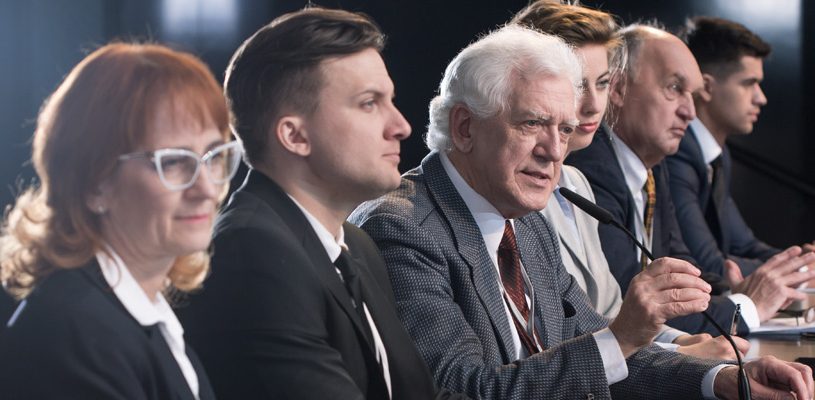The other climate change: How local political winds can alter the landscape following municipal elections

As the dawn of a new era begins to settle into the community, the recent municipal election results start to become rather apparent and begin the gradual (or not so gradual) shift in the local landscape. The challenge now lies in trying to interpret what all of those campaign promises really are about to mean. It’s not difficult to tally up all of the promises and make some assumptions about potential homeruns and strike-outs. But the real challenge is trying to make some real sense of what the “change” is about to look like.
Even to the untrained eye, it becomes very obvious that municipal candidates can stand in opposition to something or everything and still get elected; but, once the oath of office is administered and the responsibility for making decisions is in their hands, it becomes an even greater challenging to determine just how that change platform will be implemented. Now, add in the complexities of all the promises of all the successful candidates and their respective symmetries and paradoxes, and even a seasoned seer with a decent crystal ball would likely be confounded.
Reading the Tea Leaves
Many a municipal bureaucrat sitting and peering in to the eyes of the new council is likely to take that second look at the bottom of the proverbial cup in an effort to decipher what those tea leaves mean about the future. Following every municipal election, there are three distinct groups in the organization, each impacted in one way or another with the changing council landscape. Each group in their own way will attempt to figure out the future and of course re-examine their reason for choosing a career in local government.
The first group will reach into the desk drawer (at home or the office) and pull out their latest pension statement and determine if retirement is the real future and if it has miraculously arrived today (or some time real soon).
The second group will place their hopes and dreams on the first group to make the right choice. The right choice from their perspective is that the first group will move on, leaving room for them to move up a rung or two on the organization chart.
And then, there is the final group. They will simply look at the other two and wonder what in the world has changed. They are the innocent ones – who will one day realize what change is really all about.
At the end of the day, each of these groups has one common question. “What’s in it for me?” This is a normal human reaction, not to be frowned upon, but to be recognized as a simple fact of life.
So, if you are sitting there as a newly elected member of a municipal council, you too will be wondering – just as the employees over whom you will have some degree of control – exactly where is this leading and how you reconcile the changes that democracy has placed upon your shoulders.
Asking the Right Questions
There are a number of questions that need to be asked and honestly addressed to get to the point where there is clarity in determining what needs to happen and how it needs to occur.
1. Where do you want to go? – What are the end goals which you are focused on? How are you translating this vision in a way that others will understand it and buy into it? How will you as a council develop that vision and create that strategic plan? There are many approaches, and each has its own inherent challenges and possibilities.
2. How do you want to get there? – Knowing where you want to go is only half the battle. Once you have the strategic plan, how will it get translated into actions or an operational plan?
3. Have you packed the right luggage for the trip? – Are you ready for this journey? Assess your bench strength. Does your council team have the skills and competencies required for the type of leadership that the community expects and the plan requires? Does your administrative team have what it takes (the technical, leadership, administrative, and management skills) to deliver upon the strategic vision?
4. Plane, train, automobile or pack mule? – Does the organizational structure and culture support the attainment of the vision? Will you be able to exercise the patience to allow the process to unfold? Will the speed of change be one of revolution or evolution? Do you need to Restructure, Retool or Renovate?
- Restructuring/Revolution – A focus on structure creates a degree of upheaval and brings with it inherent financial and operational costs. But, it also sends a clear message that the world is changing – and so are the demands and expectations.
- Remodelling/Evolution – Focus on culture by shifting responsibilities and edging the culture forward demonstrates a degree of corporate stability. But, it is easy to slide backwards without a solid commitment and driving force.
- Retooling/Hybrid approach – A focus on fixing what needs fixing is part retooling; but, where the core behavioural competencies are not displayed, undertake some of the more drastic measures of restructuring.
So, let’s get started. As we move along, it will become clear to even the rookie councillor that the word “change” means different things to different people. The need to be specific about what we want, rather than describing what we don’t want, should be helpful to your council colleagues, municipal staff, and of course the public.
Where do you want to go?
There are two things this article will not delve into. It will not provide a thesis on the manner in which a strategic plan is best developed. You can find a plethora of books on this subject that address the process of strategic planning in much more depth than the space of this article allows. Nor will the article attempt to explain the world of politics and how political decisions are made. Suffice it to say that every person at the council table has a number of goals that they want to accomplish during their term. The give and take of politics is not our topic; rather, our topic is what to do with the outcome of that give and take process.
The beginning of the process is the establishment of a common vision that is generally agreed to by all the decision makers. The strategic plan comes into being when the components that make that vision real are established. When considering the number of broad-based objectives that support the vision, consider structuring them into logical groups. And, if the number of objectives exceeds five or six, consider a broader linkage or association. Too many broad-based objectives will leave your audience confused and create more opportunities for conflicting priorities. Having too few broad-based objectives will risk the creation of a strategic plan that ignores the realities and pressures that will help and hinder success. Some of those broader objectives may include:
- Economic diversification – campaign promises = jobs/jobs/jobs;
- Environment – campaign promises = protect and preserve;
- Infrastructure investment – campaign promises = fix the potholes and add playground equipment in parks;
- Taxation – campaign promises = no tax increases;
- Operational efficiencies – campaign promises = get city hall working;
- Debt management – campaign promises = stop the spending (aka gravy train).
The preparation of each broad-based objective includes consideration of several factors that will provide a common understanding of the forces behind the decision-making process for the life of the strategic plan. These factors are:
- tightly worded definitions;
- specific quantification wherever possible;
- specific qualification where applicable; and
- timeframes.
For example: By the end of 2014, the municipality will decrease its total debt load to less than $1,500 per residential taxpayer. (You will need to know what your current debt load per residential taxpayer is currently to determine how impactful and attainable such a goal might be.)
How do you want to get there?
A vision and five or six broad-based objectives simply set out the picture of the future and provide high level goals. Looking at the list provided, there is a potential for conflict between those priorities. Right or wrong, that is the typical list that would be generated today, based on the campaign promises arising in most communities as of late. The legs for the strategic plan are the operational plans. An operational plan is a much more detailed and specific plan that establishes how the components of the strategic plan will be achieved, when they will be achieved and at what cost (i.e. money and resources). The operational plan needs to be reviewed, revised, and restated every year as progress is made – or not – in the attainment of the high-level goals. We also need to ensure that, after each year, the progress is tracked based upon the efforts made toward attaining the goals. After all, the plan is a living document that should demonstrate our flexibility to adapt it according to changing circumstances.
Have you packed the right luggage?
If the organization really wants the time invested in the operational plan to be of value, and for the strategy to be realized, make it the basis for measuring the performance of the politicians and the bureaucrats alike! It is truly amazing how much faster the boat reaches its intended destination when everybody is rowing in the same direction. Now, consider the effect on all concerned if the operational plan is publicized and the results become the council report card.
Each operational plan will be based on certain assumptions and on certain requirements. While the assumptions must be realistic, let’s focus on the requirements. This is an opportunity to bring all of the documentation together and consider the strategy as a whole. Is it possible to achieve all of the goals? If not, what needs to happen for all of the goals to be achieved?
Let’s turn our attention to the organization itself to see what potential challenges we may have that would prevent the attainment of these goals. Are contingency and succession plans in place, or does the plan rest on the hope that there will be no dramatic personnel changes for four years? What skill sets is the organization lacking for this plan to be successful? Does the organization have the right people in the right places to achieve these goals? Is the organization’s structure and culture prepared for this approach? And, if not, what is the gap between where it is and where it needs to be?
In our next article, we will explore some of the possible answers to these questions, as we discuss the merits of restructuring and remodelling – and the circumstances most appropriate to each approach. MW
as published in Municipal World, April 2011
Joe Levack is a management consultant with over 20 years experience in the private and public sectors, specializing in all areas of labour relations and human resource management.
John Skorobohacz is currently the CAO for the Town of Innisfil and has been in municipal administration for over 28 years, working in both small and large municipalities.
Related resource materials:



